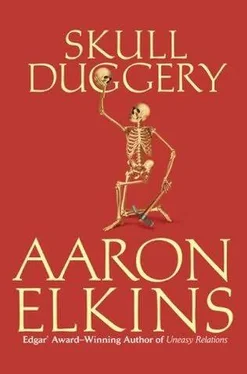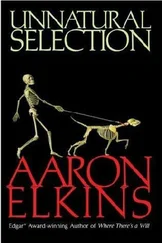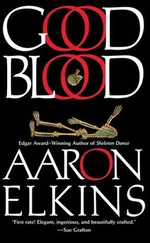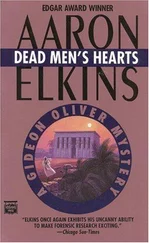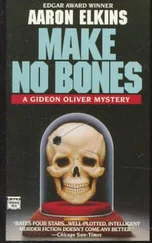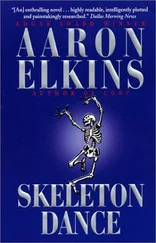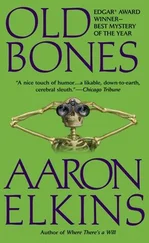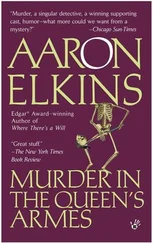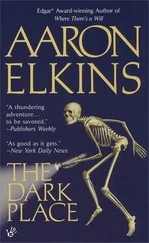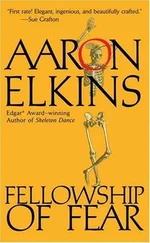Aaron Elkins - Skull Duggery
Здесь есть возможность читать онлайн «Aaron Elkins - Skull Duggery» весь текст электронной книги совершенно бесплатно (целиком полную версию без сокращений). В некоторых случаях можно слушать аудио, скачать через торрент в формате fb2 и присутствует краткое содержание. Жанр: Классический детектив, на английском языке. Описание произведения, (предисловие) а так же отзывы посетителей доступны на портале библиотеки ЛибКат.
- Название:Skull Duggery
- Автор:
- Жанр:
- Год:неизвестен
- ISBN:нет данных
- Рейтинг книги:4 / 5. Голосов: 1
-
Избранное:Добавить в избранное
- Отзывы:
-
Ваша оценка:
- 80
- 1
- 2
- 3
- 4
- 5
Skull Duggery: краткое содержание, описание и аннотация
Предлагаем к чтению аннотацию, описание, краткое содержание или предисловие (зависит от того, что написал сам автор книги «Skull Duggery»). Если вы не нашли необходимую информацию о книге — напишите в комментариях, мы постараемся отыскать её.
Skull Duggery — читать онлайн бесплатно полную книгу (весь текст) целиком
Ниже представлен текст книги, разбитый по страницам. Система сохранения места последней прочитанной страницы, позволяет с удобством читать онлайн бесплатно книгу «Skull Duggery», без необходимости каждый раз заново искать на чём Вы остановились. Поставьте закладку, и сможете в любой момент перейти на страницу, на которой закончили чтение.
Интервал:
Закладка:
In this frame of mind he thought it best to put off opening the neatly folded brown paper sack labeled craneo, in which the patent evidence of murder would be found. In merely lifting it out of the carton, he had been made aware of the fragile, shattered pieces inside, crackling like so many broken eggshells. Better to work his way slowly up to that.
He pulled up the stool that had been provided at his request, had a sip of Marmolejo’s excellent espresso that had likewise been provided, put the sack to one side and settled down for a closer look at the rest of the skeleton. Score another one for Dr. Orihuela: he could tell the difference between a right and left clavicle and even between a right and left fibula. One might think any physician, especially a forensic pathologist, would be able to do that, but one would be wrong. Yes, an orthopedic surgeon, say, had better be familiar with every muscle insertion point, every foramen, every fossa, on the human tibia. But as for differentiating between a right one and a left one, they had available to them a foolproof, sublimely simple method for doing it: the right one was the one in the right leg, and the left one was the one in the left leg. Medical doctors simply aren’t trained in working with bones that don’t happen to be enclosed in bodies and at least roughly in their appointed place, and why should they be? When would a doctor have to deal with an isolated, bodyless bone? Never. That was what anthropologists did.
But this particular doctor had gotten it right. There were, as he had reported, a left clavicle, a right innominate (the right half of the pelvis); the long bones of the left leg-femur, tibia, and fibula; and, in another paper sack, twenty-two of the twenty-six bones of the left foot. (Orihuela had prudently described them as hand or foot bones, and hadn’t specified the side, but this was understandable; it had been a long time before Gideon himself could reliably distinguish between many of those almost identical little bones without an atlas at hand.)
Why this particular assemblage of bones? Why the right hip and the right collar bone, but the left leg and foot? Why the top and bottom of the body but nothing, other than a single clavicle, a collar bone, in between-no ribs or vertebrae, no scapulas, no arm bones? Why no sacrum, why no sternum? Who knew? Gideon could speculate, but after all the time these remains had lain in the mine it wouldn’t be much better than guesswork. The elements, the bugs, the animals had all had their chance at mucking up things over the years.
The years they had lain in the mine. Here, Gideon thought, was one place he might question Orihuela’s judgment. Yes, the bones showed the kind of pitting and superficial flaking that he too might associate with five or so years of exposure in the semiarid climate of inland southern Mexico. (Or two, or twenty; bone weathering was one of the many wildly variable after-death phenomena.) But how much “exposure” was involved in lying at the bottom of a mine shaft? There might or might not be rain, depending on exactly where the body was situated, but there would be no sun to broil the bones, no wind to abrade them, no big temperature or humidity swings to swell and shrink and crack them. So if the remains had really been in the mine all that time (not that there was any guarantee of that), the weathering process would have been greatly slowed. These bones might be considerably older than five years. Sergeant Nava had said they had tried to identify the girl, if it was a girl, from missing-persons records that went as far back as eight years. Gideon would be suggesting to Marmolejo that they might do well to take that back a decade or so. He jotted a note to himself on the breast-pocket pad he’d brought with him.
Next, also putting aside the sack of foot bones, he went over the innominate, clavicle, and leg bones for signs of injury, old or new, and of disease or abnormality or anything else that might individuate them and thus help the police in identifying them. As Orihuela had said: there was nothing.
That left ancestry (formerly known as “race”), sex, and age, preferably to be determined in that order because girls’ and boys’ skeletons matured at slightly different rates. (Girls’ skeletons matured earlier.) So it was helpful to know the sex before trying to determine the age; and since sexual characteristics differed somewhat between racial groups, it was helpful to ascertain the race before trying to determine the sex. Ancestry, sex, age.
Ancestry he already knew he had little chance of determining. Not on this assemblage of subadult bones. It might be that when he opened the sack with the skull and the mandible, he might find that the incisors were “shovel shaped,” which in this part of the world would suggest, but hardly prove, Native American ancestry. In any case he wasn’t yet ready to face that particular dismal litter of human debris. Besides, he didn’t need the race to determine the sex. He already knew the sex.
Once again, Orihuela had been on the mark. Subadult or not, the sexual characteristics of these remains were unmistakable, and they were those of a female.
The “too much chewed” right innominate bone-the right half of the pelvis-made that absolutely clear. The bones of the pelvis, for obvious reasons, offer more differentiating criteria between the sexes than any other skeletal element in the body. Indeed, the pelvis is the one skeletal element from which the sex can be determined with 100 percent reliability. Women are built to be capable of having babies. Men aren’t, and the distinctions are hard to miss or to get wrong once you know what to look for. There is the shape of the greater sciatic notch, of the obturator foramen, of the auricular surface of the ilium, of the ilium as a whole. All these things were observable despite the heavy gnawing around all the edges, and they all yelled “female” at Gideon, as they would have at anyone else who knew what he was doing.
That the skeleton of a teenage girl-thirteen to fifteen, if Orihuela was correct-should show the sexual differentiation of a woman of twenty was, as Gideon had told Marmolejo, unusual; something you didn’t expect to run into every day, or every month, and its un-commonness bothered him. Generally speaking, skeletal maturation and sexual differentiation progressed in concert. You wouldn’t expect one to outstrip the other by five years, or even three. Like any scientist, Gideon was more comfortable when his data performed the way they were supposed to, when they fit the prevailing model; and these remains definitely didn’t. However, he understood well enough that while something like this was anything but common, it wasn’t unique either, or even “abnormal.”
Human variability wandered all over the map, and, like most kinds of variability, the results were almost always in the ubiquitous form of the bell-shaped curve. Whatever characteristic you were measuring, the great majority of people could be counted on to cluster near the center, in the great, humped body of the bell. But there were always those who didn’t fit-bigger, smaller, fatter, thinner, more developed, less developed-the people with the traits that constituted the “tails” on either side of the bell, tapering down to nothing as they became more and more extreme and infrequent. What he had in front of him now was apparently an example of someone out near one of those extreme ends of the bell-shaped curve of subadult sexual differentiation. If something has, say, a one-in-a-hundred probability of occurring, then it was reasonable to expect to encounter it every hundred times or so. And he had looked at hundreds, maybe thousands, of skeletons. He was probably long past due to come across one like this.
So why worry?
But worry he did; the more extraordinary your findings, the more you had to wonder if there might be something you were misinterpreting, something more or less than met the eye, something that would easily explain away apparent discrepancies or inconsistencies. something, even, about which you were flat-out mistaken. Well, he wasn’t mistaken about the sex, of that he was sure. So that left the other end of the equation, the age. She was a subadult, all right; Gideon had already seen that for himself with a glance, but where in that category did she fit? If she were at the eighteen-year-old end, then the sexual differentiation wouldn’t be so extraordinary, no more than a year or so premature; not much to trouble oneself about. But if she were, as Orihuela had estimated, at the other end, the thirteen-year-old end…
Читать дальшеИнтервал:
Закладка:
Похожие книги на «Skull Duggery»
Представляем Вашему вниманию похожие книги на «Skull Duggery» списком для выбора. Мы отобрали схожую по названию и смыслу литературу в надежде предоставить читателям больше вариантов отыскать новые, интересные, ещё непрочитанные произведения.
Обсуждение, отзывы о книге «Skull Duggery» и просто собственные мнения читателей. Оставьте ваши комментарии, напишите, что Вы думаете о произведении, его смысле или главных героях. Укажите что конкретно понравилось, а что нет, и почему Вы так считаете.
